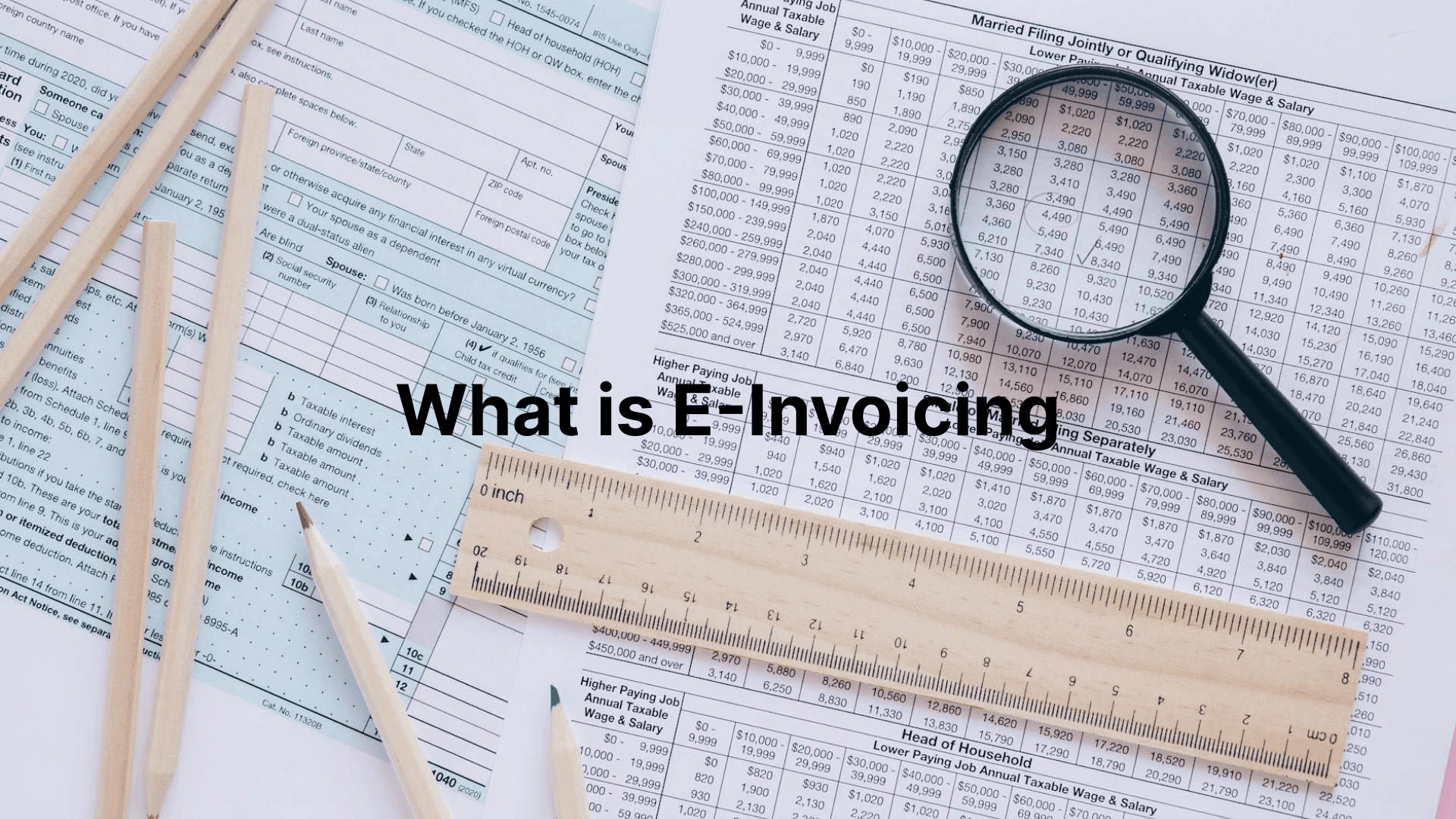What is E-Invoicing
 Cooper
Cooper
Table of Contents
E-invoicing, short for electronic invoicing, is the process of issuing, receiving, and processing invoices digitally in a standardized format. Unlike traditional paper or PDF invoices sent via email, e-invoices are generated, transmitted, and processed through a structured data format.
This structure ensures that invoices are easily readable by software systems, eliminating the need for manual entry or interpretation.
For example:
- A supplier creates an invoice in their ERP system.
- The invoice is automatically sent through a secure e-invoicing network to the buyer's ERP system.
- The buyer’s system validates and processes the invoice for payment without manual intervention.
E-invoicing is often governed by specific regulations in different countries, such as Peppol in Europe and InvoiceNow in Singapore, which ensure security and compliance.
2. Why is E-Invoicing Important?
2.1 Reduces Human Errors
Manual processes are prone to errors like incorrect data entry, mismatched details, and lost documents. E-invoicing eliminates these issues by automating the process, ensuring accuracy.
2.2 Speeds Up Payment Cycles
E-invoices are processed faster than paper-based or PDF invoices because they skip manual handling. This leads to quicker approvals and payments.
2.3 Compliance with Regulations
Governments worldwide are adopting e-invoicing to enhance tax reporting, reduce fraud, and simplify audit processes. Compliance with these mandates helps businesses avoid penalties.
2.4 Cost Savings
E-invoicing significantly reduces costs associated with printing, mailing, and storing physical invoices. According to industry studies, businesses can save up to 80% in invoicing costs by going digital.
2.5 Environmental Benefits
Switching to e-invoicing supports sustainability by reducing paper usage, cutting down on carbon emissions from mail deliveries, and promoting eco-friendly practices.
3. How Does E-Invoicing Work?
The e-invoicing process can be broken into three main steps:
3.1 Invoice Creation
The seller generates an invoice in a structured data format, such as XML or JSON, using an ERP or accounting software.
3.2 Transmission via a Network
The invoice is securely transmitted through an e-invoicing platform or a designated network, such as Peppol. This ensures that the data is protected and reaches the correct recipient.
3.3 Receipt and Processing
The buyer’s system receives the e-invoice, validates its data, and processes it for payment. Integration with ERP systems ensures seamless handling.
4. Key Features of E-Invoicing
To truly understand the value of e-invoicing, it’s essential to explore its features:
- Standardized Format: Ensures compatibility across systems.
- Secure Transmission: Protects sensitive financial data during transfer.
- Automation: Eliminates manual handling of invoices.
- Integration with ERPs: Syncs with existing systems for smooth operations.
- Audit Trail: Maintains a transparent record of all transactions.
5. Who Uses E-Invoicing?
E-invoicing is adopted by businesses across industries and scales. Here’s a breakdown:
- Small and Medium Enterprises (SMEs): To save costs and improve cash flow.
- Large Corporations: For processing high invoice volumes efficiently.
- Governments: For tax reporting and fraud prevention.
6. Global E-Invoicing Trends
6.1 Widespread Adoption
Countries like Singapore, India, Italy, and Brazil have implemented mandatory e-invoicing for specific sectors, driving adoption globally.
6.2 Rise of Peppol Network
The Peppol framework is becoming the global standard, allowing seamless cross-border invoicing.
6.3 Real-Time Reporting
Governments are requiring real-time invoice submissions for tax compliance, making e-invoicing essential for businesses to stay compliant.
6.4 Sustainability Focus
Organizations are adopting e-invoicing to meet environmental goals and reduce their carbon footprint.
7. Benefits of E-Invoicing for Professionals
E-invoicing offers tailored benefits for various roles:
For Finance Teams:
- Faster reconciliation of invoices.
- Reduced risk of fraud and duplication.
For IT Teams:
- Seamless integration with ERP systems.
- Easy scalability to handle growing invoice volumes.
For Business Owners:
- Enhanced cash flow visibility.
- Improved relationships with suppliers and buyers due to timely payments.
8. Challenges of E-Invoicing
While the benefits are significant, businesses may face challenges during the transition:
8.1 Initial Setup Costs
Investing in e-invoicing platforms or ERP upgrades can be costly. However, the ROI often outweighs the initial expenses.
8.2 Training Requirements
Teams may need training to adapt to new systems and processes.
8.3 Compliance Complexity
Understanding and adhering to local and international e-invoicing regulations can be challenging for businesses operating globally.
How to Overcome These Challenges?
- Choose a user-friendly platform.
- Work with a trusted e-invoicing provider.
- Regularly train staff on best practices.
9. E-Invoicing vs. Traditional Invoicing
| Aspect | Traditional Invoicing | E-Invoicing |
| Format | Paper or PDF | Digital, structured format |
| Processing Time | Manual and time-consuming | Automated and quick |
| Errors | High risk of errors | Minimal errors |
| Cost | Printing, mailing, storage costs | Low operational costs |
| Compliance | Hard to track | Automated compliance tracking |
10. How to Implement E-Invoicing in Your Business
Step 1: Assess Your Needs
Understand your invoicing volume, ERP system compatibility, and compliance requirements.
Step 2: Choose the Right E-Invoicing Platform
Look for features like ERP integration, secure transmission, and compliance support.
Step 3: Train Your Team
Provide training to ensure smooth adoption of the e-invoicing system.
Step 4: Test and Launch
Run a pilot project to identify and fix any issues before full-scale implementation.
Step 5: Monitor and Optimize
Regularly review your e-invoicing process to ensure efficiency and compliance.
11. Future of E-Invoicing
The global shift towards e-invoicing is inevitable. Emerging technologies like blockchain and AI are expected to further enhance e-invoicing by providing greater security, automation, and real-time analytics.
12. Conclusion
E-invoicing is not just a tool for compliance—it’s a gateway to efficiency, cost savings, and sustainability. For professionals across industries, understanding and adopting e-invoicing is essential to staying competitive in a rapidly digitizing world.
By embracing this technology now, businesses can position themselves for long-term growth and success in an increasingly interconnected economy.


